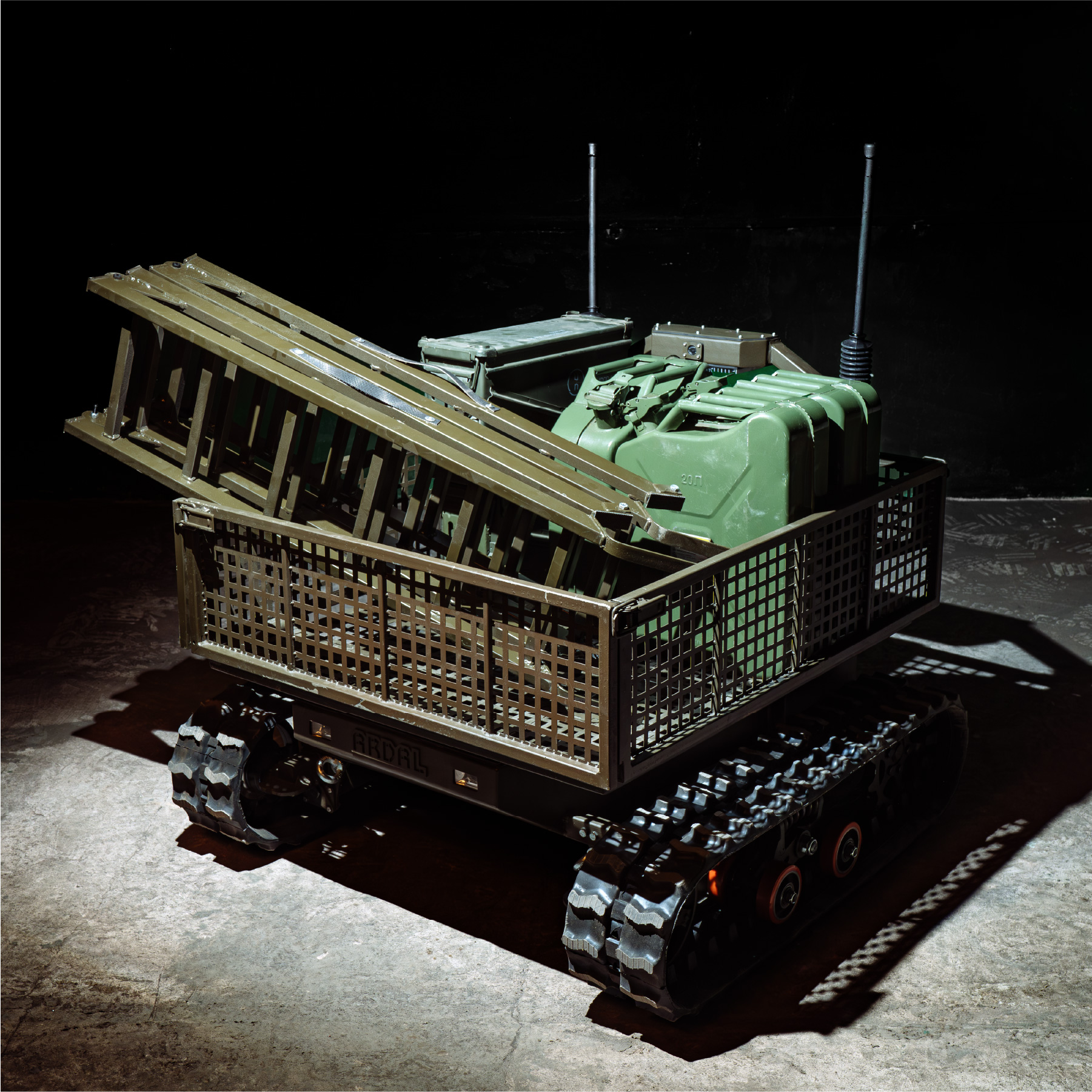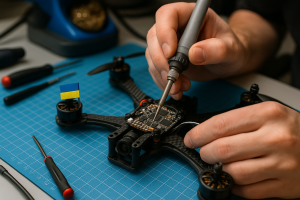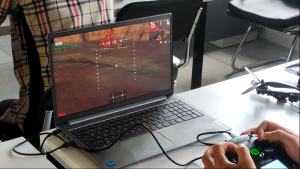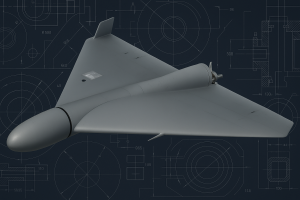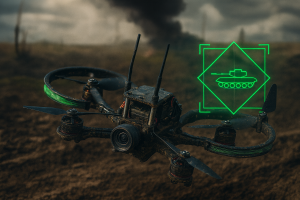From “Goliath” to AI: A History of Development
Remotely operated GRS first appeared on the battlefield during World War II. The most well-known “robot” of that era was the German Goliath Sd.Kfz. 302. Small in size, this tracked mine carrier was controlled via cables. Its main task was to blow up tanks and fortifications — the platform itself was detonated along with the target. Although Goliath’s practical effectiveness was limited due to the vulnerability of its control cable, it became the historical predecessor of modern GRS.
The role of a “mine” remained the primary function of self-propelled platforms for quite a while. For example, between the 1950s and 1980s, the U.S. tested remote-controlled mine-clearing platforms in Vietnam. Only with the development of microelectronics, digital communication, and GPS in the 1990s did the first more functional projects emerge. And it was in the 2000s that a breakthrough occurred in this field with the introduction of the first serially produced military GRS.
TALON (USA) – Since 2001, it has been actively used in Iraq and Afghanistan for demining operations and reconnaissance. Most often, it was used to transport cameras, manipulators, tools, and even light weapons.
SWORDS (developed based on TALON) – This became the first U.S. combat GRS equipped with an M249 machine gun. It was used in Iraq in 2007, marking the first documented combat deployment of an armed GRS.
Guardium (Israel) – This semi-automated patrol platform operates under operator control and has been actively used along the Israeli-Palestinian border since 2008. Greater autonomy became possible with the integration of artificial intelligence into GRS.
Since 2010, robotic system technologies have evolved significantly, as clearly demonstrated by the developments of that time, for example:
MAARS (USA) – a modified combat GRS with a flexible weapon platform and 360° video surveillance.
Themis (Milrem Robotics, Estonia) – a universal platform on which various types of modules can be installed. It is used by NATO for logistics and reconnaissance.
After 2014, as the role of unmanned technologies began to grow, most leading countries invested in the research and deployment of GRS. This also became a pressing task for Ukraine, which, since 2022, has had to create unique technological solutions directly under combat conditions.
Types of GRS: Purpose and Functionality
Ground robotic systems are no longer just remotely controlled vehicles capable only of detonation or mine clearance. Modern GRS are highly specialized systems capable of performing critically important tasks on the battlefield.
Combat GRS are armed with machine guns, grenade launchers, anti-tank guided missiles (ATGM), or automatic cannons. They are powerful weapons for assaulting enemy positions, holding flanks, or firing from a safe distance for the operator. For example, the Ukrainian Ratel S has already proven its effectiveness in combat conditions.
Another mission that robotic platforms can carry out is reconnaissance. These machines are equipped with high-precision sensors: day/night vision cameras, thermal imagers, radars, and LIDARs. They serve as the ground “eyes” of military units, helping to detect enemy positions without putting soldiers at risk. While FPV drones observe from the sky, GRS move unseen on the ground. One example is the Israeli Guardium, which patrols borders in a semi-autonomous mode.
For mine disposal, clearing debris, and creating engineering passages, engineering and sapper GRS have been developed. Platforms like TALON (USA) or the British CUTLASS are equipped with manipulator “arms” that allow remote removal of mines or transport of explosive objects.
Additionally, GRS can be used for logistical operations – transporting ammunition, water, medical supplies, evacuating the wounded, and extracting cargo from under fire. Robots replace humans in dangerous zones and help save lives. For example, the Estonian Themis can carry up to 750 kg of payload over distances up to 20 km.
The Evolution of Shaheds: How Russia Scaled Its Drone Warfare — Learn how Russia enhanced Iranian-made long-range drones to make its strikes more effective.
Many modern GRS can combine several functions, for instance, performing both reconnaissance and combat tasks. Versatility is invaluable amid shortages of human and technical resources and the increasing dynamics of combat. Depending on their purpose, machines can have different design and technical features. Models are based on either tracked or wheeled chassis and are equipped with secure communication channels, GPS, inertial navigation or marker beacons, night vision modules, thermal sights, AI elements for target detection, face recognition, or minimal autonomous movement. External armor protects key platform components from damage.
Most Ukrainian platforms are modular – allowing rapid changes of armament or mission purpose during task execution. Depending on the model and mission conditions, GRS can operate for 4–6 hours without recharging. The operational range from the operator can be 5–10 km.
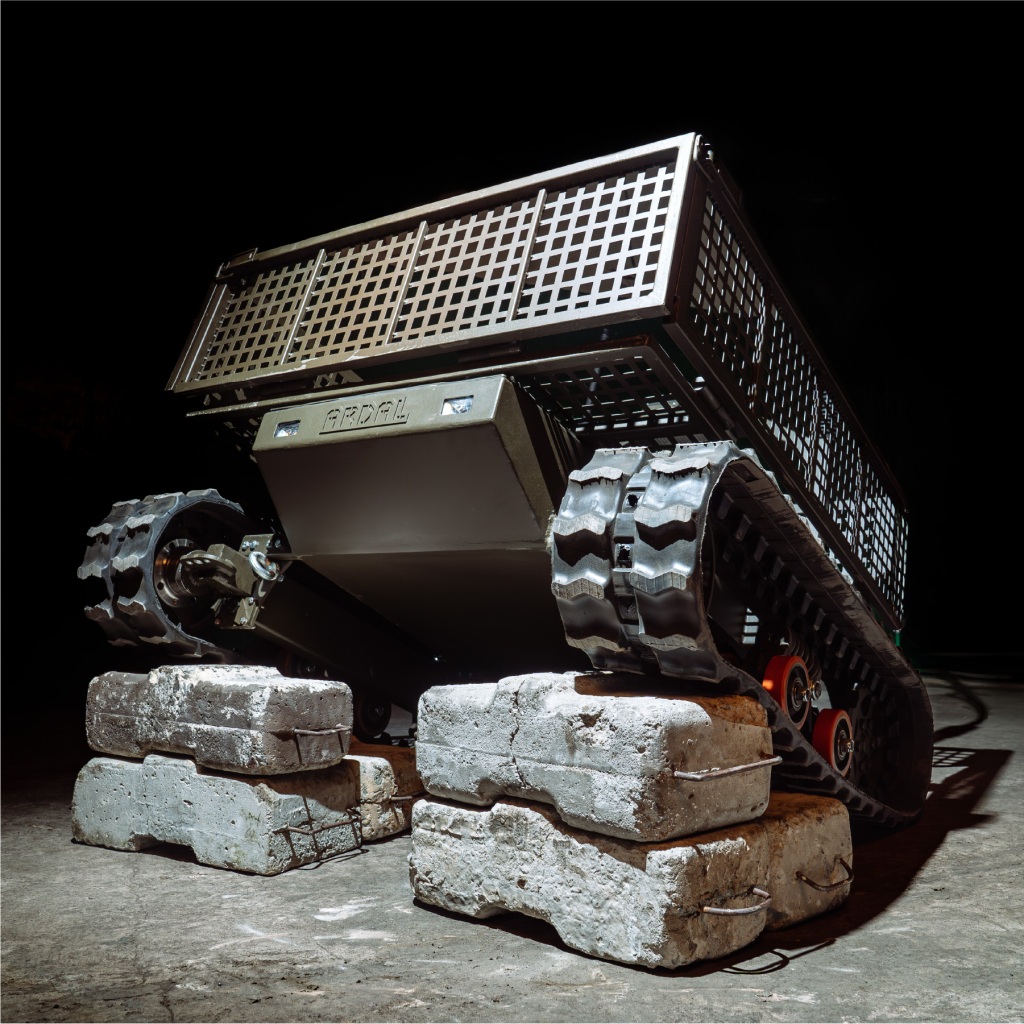
According to Defense News forecasts, by 2030, the share of GRS in NATO combat operations may reach 30%. Similar progress can be expected in other armies around the world as well. Ground robotic systems are no longer science fiction—they are a reality of modern warfare, including here in Ukraine.
Ukrainian Experience of Using GRS on the Frontline
The strongest catalyst for technology development is the demand for the capabilities these tools provide. The war with Russia has become a significant stimulus for Ukraine to implement GRS. Intense combat operations, dense minefields, and the urgent need to preserve personnel have all created a demand for new types of weaponry. Both private companies and volunteer organizations are actively working on developing robotic systems. GRS have become a necessity—they perform a range of tasks including infantry fire support, reconnaissance and video surveillance, delivery, evacuation, mine clearance, and engineering duties. Many Ukrainian platforms are already operating on the front lines.
One such development is the combat armored tracked GRS Ratel S from the Ratel group. Armed with a machine gun, it is actively used for assaulting trenches, providing fire support, and remotely engaging targets. Under the cover of Ratel, operations have been conducted in the Kharkiv direction, Avdiivka, and Orikhiv.
The multifunctional platform Shablya from Roboneers is used for evacuating the wounded and logistics. It has a wheeled chassis and is equipped with powerful batteries, allowing it to carry a stretcher with a soldier for extended periods. Shablya units help optimize rescue and logistical processes across many frontline directions.
Developed by a private inventor with support from Brave1, the robotic system “Lyut” is armed with a 7.62 mm caliber machine gun and was specifically created for delivering firepower in combat conditions. The vehicle features strong Class 4 armor for protection and a design that ensures high off-road mobility.
The Kozak Robotic, built on an armored vehicle, is a semi-autonomous combat machine capable of firing from cover and providing fire support. It is currently undergoing combat testing with Special Operations Forces units.
Engineers from the 3rd Separate Assault Brigade developed a kamikaze drone designed to carry TM-62 anti-tank mines instead of wheels. The mines are securely mounted inside three frames integrated into the drone’s structure. A video demonstration of this new robot from the brigade’s stand was released by ArmyInform.
According to Mykhailo Fedorov, “Currently, over 200 companies are working on robot production, and more than 40 designs have been codified according to NATO standards. The first successful robotic mission has already been completed. Robots should be the ones fighting, not people”.
Russian Response: GRS in Enemy Service
The Russian side is not standing aside. Developments in robotic systems by the enemy are just as active, and given Russia’s vast industrial capacity, they significantly outmatch Ukraine’s capabilities.
Currently, Russia employs various GRS models with expanded functionality. Among the most common is the Uran-9 — a robotic mine-clearing tank equipped with an automatic cannon, machine gun, and anti-tank guided missiles. Russia used the Uran-9 in Syria, and it is now deployed in the war against Ukraine.
Other Russian projects actively promoted by the enemy include the Marker, Robot, and Shturm GRS. These machines have so far shown mixed results and frequently experience malfunctions in real combat.
Russia’s challenges with effective GRS use are largely due to limited autonomy, reliance on manual control, and an inability to “hide” in time during missions.
Due to their low speed and predictable movement trajectory, GRS often become easy targets for drones equipped with autonomous targeting systems like the VGI-9.
GRS on both the Russian and Ukrainian sides are not yet perfect weapons. But development continues. Soon, the battlefield will see ideal combat machines — autonomous, powerful, and effective.
Challenges and Issues
Why is there still relatively little robotic equipment on the battlefield capable of replacing humans and saving lives? One of the main reasons is the high cost of manufacturing these platforms, along with the need for certification and codification of new developments. For example, a single Ratel S costs between $25,000 and $50,000. In Ukraine, GRS prices generally vary depending on their purpose and functionality:
• Lightweight platforms (kamikaze drones) cost around 20,000 UAH (about $480), according to the Ukrainian source Delo.ua.
• The versatile “Ravlyk” platform is sold for 2.2 million UAH (approximately $53,000).
• Combat modules with turrets and machine guns are available starting from $30,000 up to $50,000 or more.
In the first 10 months of 2024, the Ministry of Defense signed contracts totaling 300 million UAH. More than 10 models of Ukrainian-made GRS have been codified.
RS in the Ukrainian Armed Forces: Growth of Robotic Capabilities Today
In 2025, according to official contracts, 8,000 GRS units have already been purchased, with plans to acquire a total of 15,000 ground robotic vehicles by the end of the year—15 times more than last year. Priority is given to logistical platforms for medical evacuation and ammunition delivery.
How do drones hit targets with surgical precision? VGI-9’s CTO reveals the technology transforming modern warfare — and Ukraine’s edge in drone innovation.
Several brigades have formed specialized operator units—separate combat, logistics, and engineering teams dedicated to working with GRS. New GRS models are already in use across 22 units, including combat platforms (Ratel S, Tur) and reconnaissance-logistics systems (Termit, Ardal, Gnom-Miner, Lyut).
Plans for the Future
According to Rustem Umierov, the Ministry of Defense is launching a project aimed at scaling up the use of unmanned ground systems in the military. Thanks to an investment of $7 billion, development is underway for drones, ground robots, and electronic warfare systems. Increasing the number of robots will boost the chances that they will soon replace humans on the battlefield.
In 2024, the Ukrainian Ministry of Defense announced the creation of specialized units equipped with robotic systems. There is already consideration for forming “swarms” of GRS. Their mission would be to operate as a coordinated group: some machines providing fire, others transporting cargo, and others conducting surveillance. Combined with swarms of FPV drones, this would become a powerful weapon in any confrontation. Achieving full autonomy for GRS is currently hindered by insufficient technical infrastructure. However, forecasts suggest this will be accomplished by 2030. Today, one of the primary goals is integrating artificial intelligence and Starlink communication into most GRS systems to enhance their autonomy and ensure a stable communication channel.
Today, GRS in Ukraine are undergoing full-scale combat testing. This enables the refinement of tactics and the creation of world-class platforms right here and now, gathering direct feedback from the battlefield about errors, delays, advantages, and needs.
Modern warfare is not just about technological developments. Behind every machine stands a person. The Ukrainian Ministry of Defense, through the Army+ app, has announced recruitment for courses on operating ground robotic systems. Currently, 4,000 soldiers are undergoing training, and 1,500 have already completed the course and received certification. New Ukrainian developments and skilled operators are the very force that will soon be on the battlefield.
Contact us to get detailed information about the VGI-9 drone guidance system.
Follow our updates on social media and YouTube – there you will find:
✅ Exclusive materials on the development, testing, and combat use.
✅ Useful analytical content on the war and the role of FPV drones in modern combat operations.
✅ The latest news and insights from the world of military technologies.F
📌 Join us:
🔗 YouTube: VGI-9 on YouTube
📸 Instagram: We are on Instagram
🎯 TikTok: We are on TikTok



